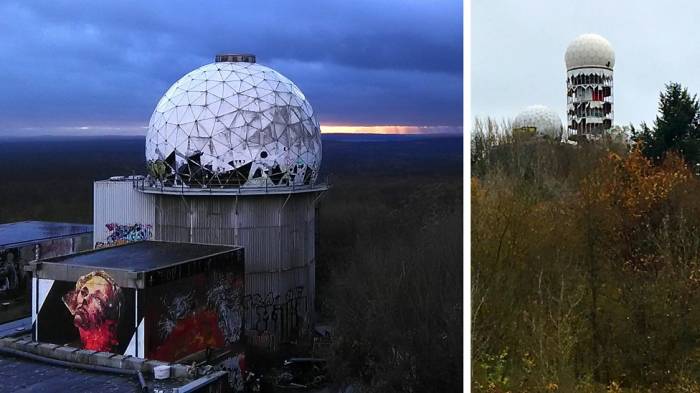About 100m below this former US spy station lies the intact shell of Hitler’s flagship military technical college. When that building couldn’t be demolished at the end of WWII, Berliners buried it under millions of tonnes of rubble from the bombed city.
The resulting hill was forested and quickly became part of the natural landscape, though remnants of the estimated 400,000 destroyed buildings which form Teufelsberg – or “Devil’s Mountain” – still protrude from the earth near the summit.
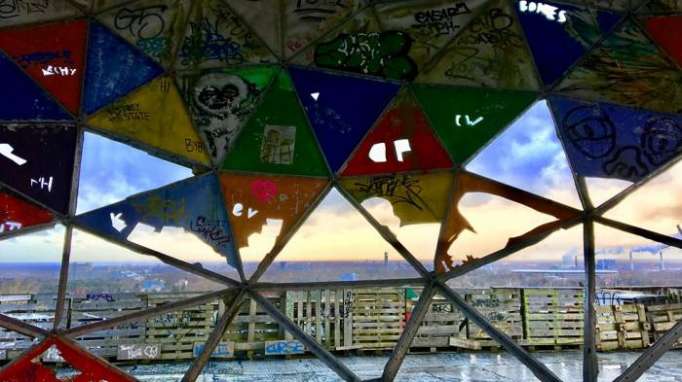
View of Berlin from inside one of the damaged and graffiti-covered radomes.
During the Cold War, the US National Security Agency constructed Field Station Berlin, once one of the West’s most important electronic listening and intelligence gathering posts.
Signals were intercepted, transcribed and translated. Paper documents were meticulously destroyed in an industrial process of shredding, burning and chemical assault.
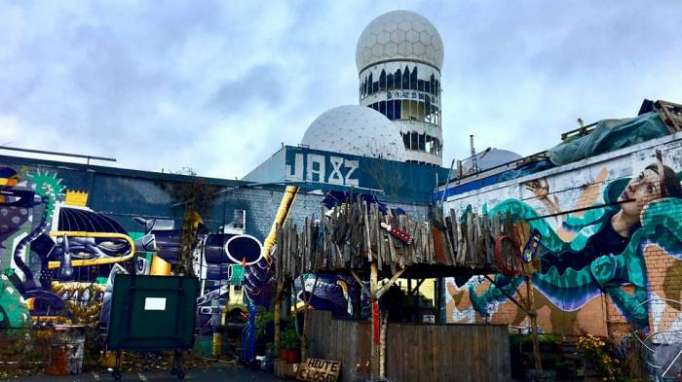
Graffiti covers the exterior and interior walls of the former listening station.
Extant Cold War buildings like this are undeniably compelling. There is an affecting power to such enigmatic structures that are familiar in material but utterly alien in form.
Access to detailed information about the work undertaken inside is impossible. The places are generally left to “speak” for themselves.
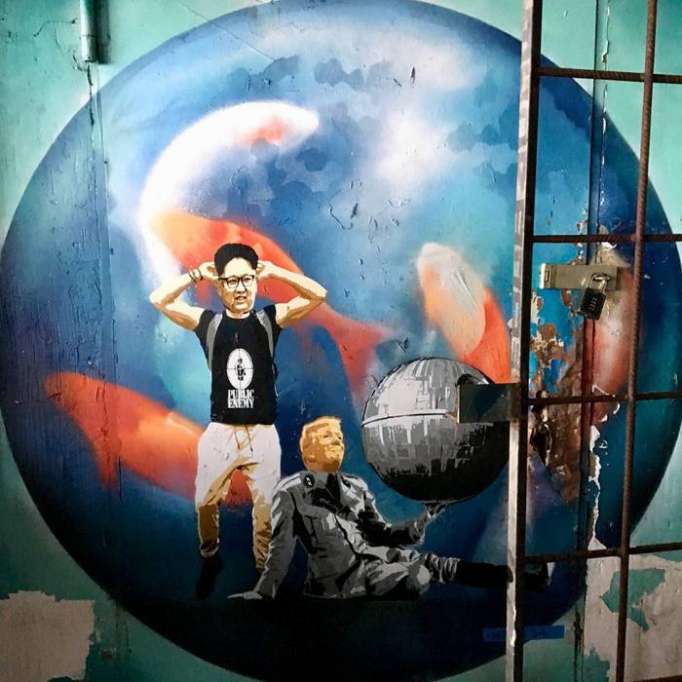
Politically inspired graffiti inside Field Station Berlin.
This 1960s-built listening station is home now – studio, gallery and even basic dwelling space – for numerous artists. Brightly-coloured graffiti covers every surface: images of political and cartoon characters vie with imagery of tangled forests.
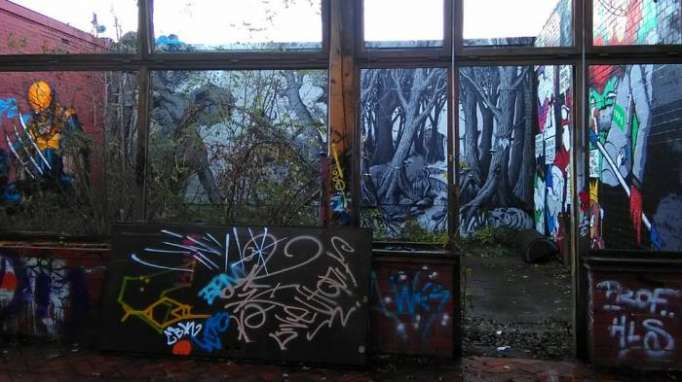
Troupes of young hip-hop dancers practise routines in what were office spaces.
It is a place of layers – fresh spray paint covers older images (though some are resolutely preserved). Pasts have been built over.
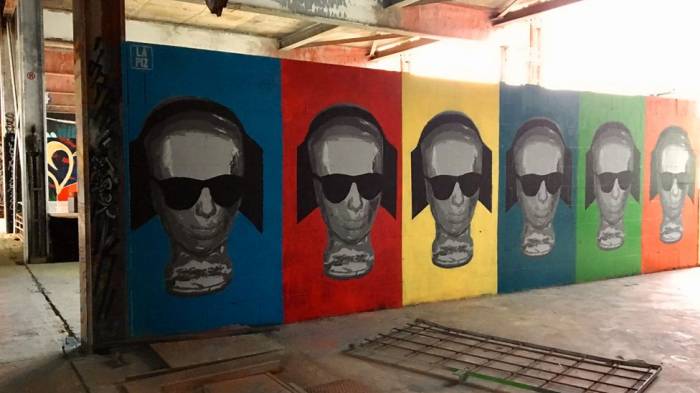
The radome coverings (previously hiding instrumentation from view) have been shredded and torn through vandalism and exposure.
It is a place that has resisted leisure gentrification and redevelopment – film director David Lynch tried to refashion it as a centre for meditation. A luxury hotel was thwarted. However after years of trespass, a stable period of usage has been won.
Tourists pay to undertake guided tours to hear its history and to see the work of those artists who have been lured by its iconic aesthetic charge and rich acoustical possibilities.
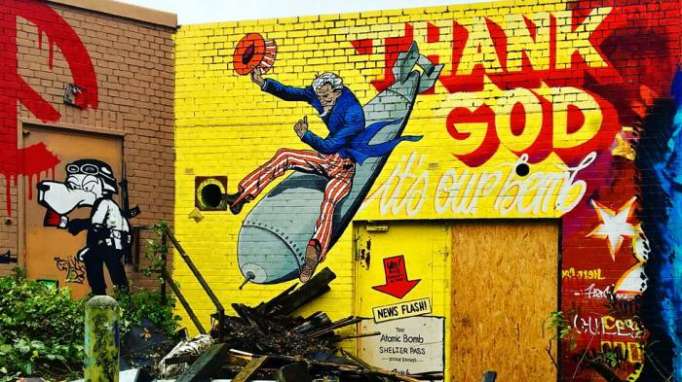
When the machinery is removed from such sites, these places become more reverberant. The wind animates the spaces and voices are carried far.
The guided tour takes the visitor further into the station’s belly, up the multiple levels of staircase in pitch darkness to the most memorable top radome. Here the Cathedral-like acoustic effects are startling: footsteps ricochet around the dome, the spatial information is confusing. By clapping hands, bursting balloons and singing you can hear the scale of the fibreglass interior. The reverberation is astounding and takes around eight seconds to die away.
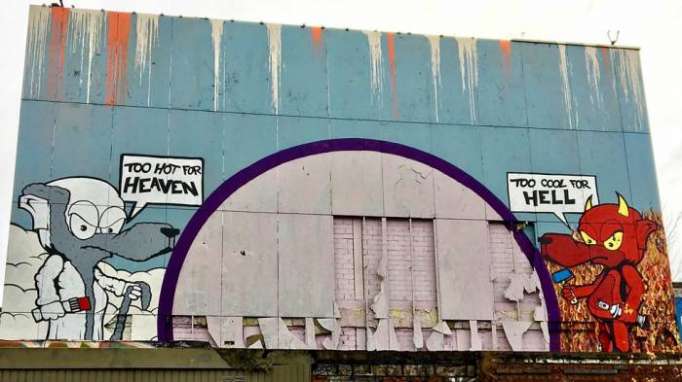
In a city where the past has been so heavily commodified, this oddly reverberant architecture of fear serves multiple purposes that are less about commerce. While for some artists its ruination offers a tangible means to consider the uncomfortable legacy of Cold War history, for others it provides a sanctuary and a blank slate.
The original article was published in BBC.
More about: art








